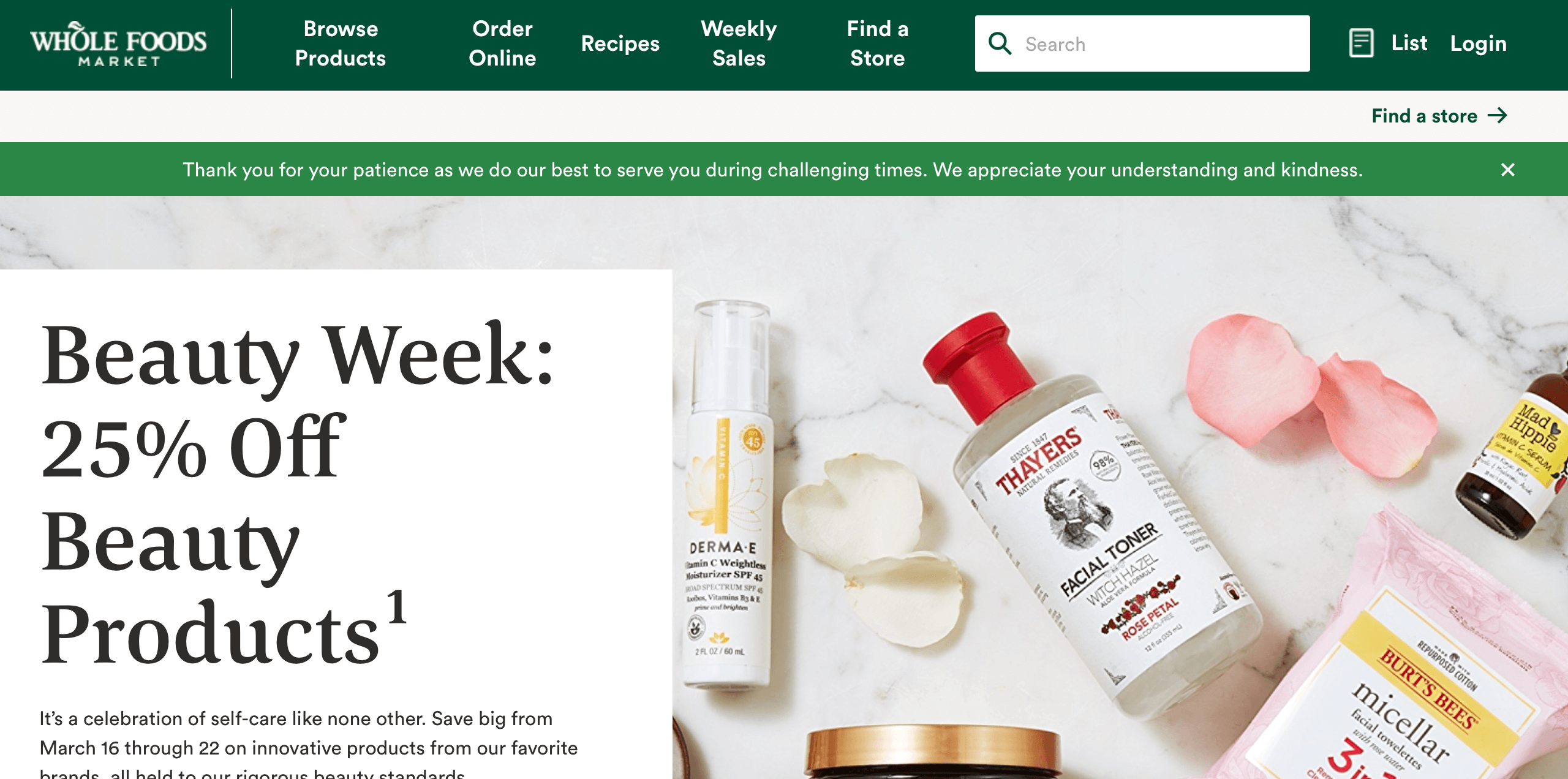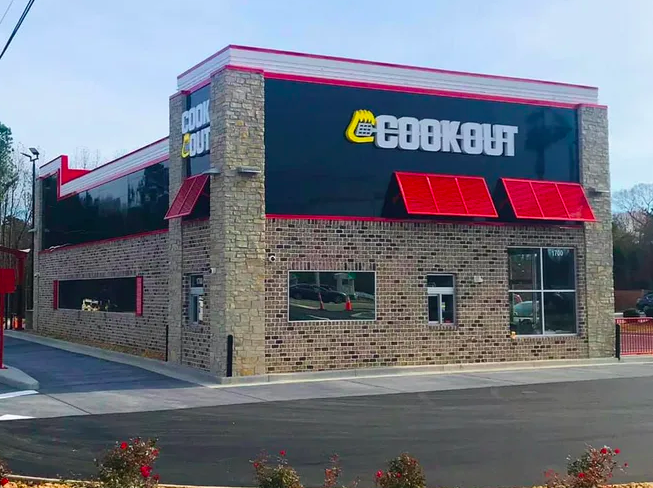It’s impossible not to know of Whole Foods Market if you’re into health and wellness. This supermarket chain has grown to more than 500 locations (in spite of higher food prices) and is well-known for selling organic products from fresh produce, dairy, meat, kitchen essentials to desserts.
For over 40 years, Whole Foods has garnered a loyal following as well as their share of critics. Hater’s gonna hate right? In spite of the criticism, Whole Foods remain continues to attract health enthusiasts and bring in annual sales of $17 billion.
How much does it cost to open Whole Foods? Unfortunately, Whole Foods is not open for franchising. Every store is company owned, even the ones outside of the United States. There has been no official statement explaining why the company won’t franchise. Some speculate it’s because the supermarket chain follows strict operations and prefers full control over the business operations.
But just because Whole Foods won’t franchise doesn’t mean you can’t learn a thing or two about the business to benefit your entrepreneurial quest. Below are some facts on the supermarket chain that might help you in the long run because who knows, maybe someday, Whole Foods might just open their doors to franchising. Take our 7-minute franchise quiz to be matched with available opportunities based on your interests and skills.
Page Contents
Financial Requirements and Fees
As mentioned above, Whole Foods is not open for franchising. But estimates suggest Whole Foods would have a franchise fee of $40,000 (minimum) if they ever decide to allow this option. After all, even convenience store concepts like 7-Eleven have franchise fees that can reach $53,000 per location.
You can expect the investment in any grocery store to reach millions in initial investment. The total startup cost of a supermarket depends a lot on the size and services offered. The bigger the space, the more expensive it would be to open. Here are some basic startup costs associated with a grocery store. Since Whole Foods is an upscale grocery, you’ll expect to pay higher costs to get started so that equipment, signage, and atmosphere match the brand perception.
- Land: You’ll need a large property in a commercial area of a city. Since Whole Foods usually open in more affluent, urban areas the cost to buy a property will be expensive. Expect to pay more than $1 million for the raw land.
- Initial build out: Next you’ll need to build the structure for the Whole Foods. This will cost another $2 million at least when you consider labor, plumbing, electrical hookups, refrigeration, shelves, signs, checkouts, carts, and other essentials for a modern grocer.
- Initial Inventory: The initial inventory, including fruits, vegetables, meats, drinks, for a Whole Foods Market will cost more than $200,000.
- Insurance, permits, and other fees: There’s a lot of hoops to jump through when opening a grocery store. You’ll need to pay for insurance, building permits, and may even need a liquor license depending on where you open. All of these is anticipated to cost another $50,000 up front.
And like all other franchises, you should expect there to be ongoing royalty fees to cover advertising and other overhead from corporate. After considering all of the expenses above, it’s not hard to see that typical grocery stores operate on razor thin margins.
Average Sales / Revenue per Year
According to Business Insider, the annual estimated revenue for Whole Foods is $17 Billion with over 500 stores. No actual numbers were given since the company no longer reports their revenue publicly ever since Amazon bought them in 2017.
Whole Foods Franchise Facts
| Total Units | Over 500 |
| Incorporated Name | Whole Foods Market |
| Franchising Since | Does Not Allow Franchising |
| Industry | Supermarket |
| Subsector | Food and Beverage |
Whole Foods was started by John Mackey. But before it was called Whole Foods Market, it started as Safer Way Natural Foods in 1978 at Austin, Texas. It only changed its name to what we know now as Whole Foods Market in 1980 after merging with Clarksville Natural Grocery.
Whole Foods expanded rapidly through the years due to merging with other supermarkets and grocery stores. Their first expansion outside of Texas happened in 1988 and by 1992, Whole Foods went public.
The supermarket chain currently has over 500 locations at present and they’re located in the United States, Canada, and United Kingdom. They have over billions in revenue, with their first billion recorded back in 1997.
Whole Foods is known for selling products that are organic and all-natural. They stick to their principles of selling healthy items by banning a list of unhealthy and harmful ingredients that can be found in their products. Some of these restricted ingredients are:
- acesulfame-K (acesulfame potassium)
- acetylated esters of mono- and diglycerides
- ammonium chloride
- artificial colors
- artificial flavors
- aspartame
- azodicarbonamide
- benzoates in food
- benzoyl peroxide
- BHA (butylated hydroxyanisole)
- BHT (butylated hydroxytoluene)
- bleached flour
- bromated flour
- brominated vegetable oil (BVO)
- calcium bromate
- calcium disodium EDTA
- calcium peroxide
- calcium propionate
- calcium saccharin
- calcium sorbate
- calcium stearoyl-2-lactylate
- caprocaprylobehenin
- carmine
- certified colors
- cyclamates
- cysteine (l-cysteine), as an additive for bread products
- DATEM (Diacetyl tartaric and fatty acid esters of mono and diglycerides)
- dimethylpolysiloxane
- dioctyl sodium sulfosuccinate (DSS)
- disodium calcium EDTA
- disodium dihydrogen EDTA
- disodium guanylate
- disodium inosinate
- EDTA
- ethyl vanillin
- ethylene oxide
- ethoxyquin
- FD & C colors
- foie gras
- GMP (disodium guanylate)
- hexa-, hepta- and octa-esters of sucrose
- high fructose corn syrup
- hydrogenated fats
- IMP (disodium inosinate)
- irradiated foods
- lactylated esters of mono- and diglycerides
- lead soldered cans
- methyl silicon
- methylparaben
- microparticularized whey protein derived fat substitute
- monosodium glutamate (MSG)
- natamycin
- nitrates/nitrites
- partially hydrogenated oil
- polydextrose
- potassium benzoate
- potassium bisulfite
- potassium bromate
- potassium metabisulfite
- potassium sorbate
- propionates
- propyl gallate
- propylparaben
- saccharin
- sodium aluminum sulfate
- sodium benzoate
- sodium bisulfite
- sodium diacetate
- sodium glutamate
- sodium nitrate/nitrite
- sodium propionate
- sodium stearoyl-2-lactylate
- sodium sulfite
- solvent extracted oils, as standalone single-ingredient oils (except grapeseed oil).
- sorbic acid
- sucralose
- sucroglycerides
- sucrose polyester
- sulfites (sulfur dioxide)
- TBHQ (tertiary butylhydroquinone)
- tetrasodium EDTA
- vanillin
The types of products Whole Foods sells are fresh produce such as fruits and vegetables, dairy and eggs, meat such as beef, lamb, pork, turkey, and chicken (all marked as Animal Welfare Certified), prepared foods, pantry essentials, baked goods (bread and rolls), and desserts.
One can shop at Whole Foods by visiting the supermarket or order online. They can have their groceries delivered or they can also opt to pick it up.
You Might Like: How Much Does it Cost to Open a Trader Joe’s?
In 2017, Amazon bought Whole Foods for $13 billion. This acquisition has prices at Whole Foods being cut down by a bit so it can become slightly affordable than before. This also allowed United States customers with Prime membership to get benefits such as 10% off on yellow sale signs and free home delivery. This enables them to save more while shopping at Whole Foods.
Whole Foods is the first and only certified organic supermarket. They are certified by the California Certified Organic Farmers (CCOF) in the United States while their United Kingdom and Canadian stores are also certified organic by their respective countries. Items that have non-GMO labels on them are verified. Even their beauty products and cleaning aids are performance-tested too and strictly does not contain harmful ingredients.
Last September 2022, founder John Mackey stepped down as CEO of Whole Foods to retire and previous COO Jason Buechel took his place. Whole Foods is currently headquartered in Austin, Texas.
How Much Does Whole Foods Make in Profit?
There has been no updated and exact data on Whole Foods’s profit since they do not release such information publicly.
Advantages of a Whole Foods Franchise
Let’s say you can franchise Whole Foods. What would the advantages be in running this supermarket chain? Here are a few you can expect.
Big Name
Whole Foods is found in the United States, Canada, and United Kingdom but even in the United States alone the supermarket is already well-known. They’re considered a giant in the supermarket industry ranking 5th in their Most Popular Grocery Stores list. Whole Foods being owned by Amazon also makes them a pretty big brand.
In addition, according to CEO Jason Beuchel there are 50 Whole Foods planned in development and they’re aiming to open 30 stores every year.
So if you do get to franchise a Whole Foods, know that you’re doing business with one of the largest groceries in the United States.
Healthy Products
As mentioned above, Whole Foods only sells healthy products. They stand by their beliefs that they even put out a list of banned harmful ingredients that you will never find in their stores and assure you of the certifications they have so you know that they’re pretty much legit.
Not Sure What Franchise to Start? Take Our 7-Minute Franchise Business Quiz!
Getting into a healthy lifestyle seems to be on a rising trend so if you ever franchise a Whole Foods supermarket, then you’ll be able to reel in the growing number of health conscious crowd that are looking for a certified all-natural grocery store to get their supplies from.
Innovations
Grocery shopping at Whole Foods is already easy with the features they’ve provided such as online ordering, delivery, and pick up. But that’s not all. Whole Foods is going even further by making sure shopping with them is done in a seamless and high-tech fashion.
Some Whole Foods locations have been given a total makeover by Amazon. Shoppers can now go inside the store, pick the items they want, and simply walk out of the store without going through a cashier. Instead, it’ll be charged directly to your credit card which you will be billed moments later.
We’re not so sure if all Whole Foods will be changed to this setup. But this just goes to show that the supermarket chain will never be left behind when it comes to innovation.
Challenges of a Whole Foods Franchise
Whole Foods, like any other business, will bring a set of challenges. Here are a few you can expect should you franchise one near you:
Controversies
Whole Foods has been the subject of controversies through the years. One of them is the “BMI Discount” issue wherein employees can receive an additional 10% off discount than their usual 20% store discount if they have a BMI below 24. Another issue was the selling of rabbit meat in their supermarkets.
Controversies like these may have happened a long time ago but these are still remembered and are mentioned once in a while by activists that can scar Whole Foods’ reputation.
But in recent news, Whole Foods is under fire for mislabeling products as “local”. According to a former Whole Foods executive, the products that the supermarket is selling contains ingredients that are not sourced locally.
Whole Foods should stick to what’s true whenever they’re marketing their brand so as not to lose customers’ trust in the future.
Packaging
Whole Foods’ packaging has been the subject of criticisms. One was the packaging of a peeled whole orange in a plastic container. Another was the overpriced asparagus water. Though these were all addressed and changed by management, overpriced items with questionable packaging still pop up from time to time.
Whole Paycheck
Whole Foods has been given the nickname “Whole Paycheck” for the longest time for being a supermarket that sells very expensive products. Even though the acquisition by Amazon has made them become a little bit affordable, Whole Foods is still known to be quite expensive than other major grocery stores in the United States.
Is the Whole Foods Franchise Right For You?
If you’re a health enthusiast with a financial status that can fit Whole Foods’ standards then this supermarket can be for you. You’ll just have to wait a few more years if Whole Foods will ever allow franchising for this dream to happen.
What is an alternative Whole Foods franchise?
If it’s a healthy business franchise you’re looking for, check out Jamba Juice. They’re a popular franchise in the United States and around the world that sells smoothies, juices and fresh fruit bowls.
To franchise Jamba Juice, expect the franchise fee to be $35,500 and initial investments to be around $290,050 to $ 741,500. Another option is Trader Joe’s that has a strong following in California.
There you have it! Whole Foods may not be franchising as of the moment but with this guide, you’ll be ready for them once an offer opens up.





